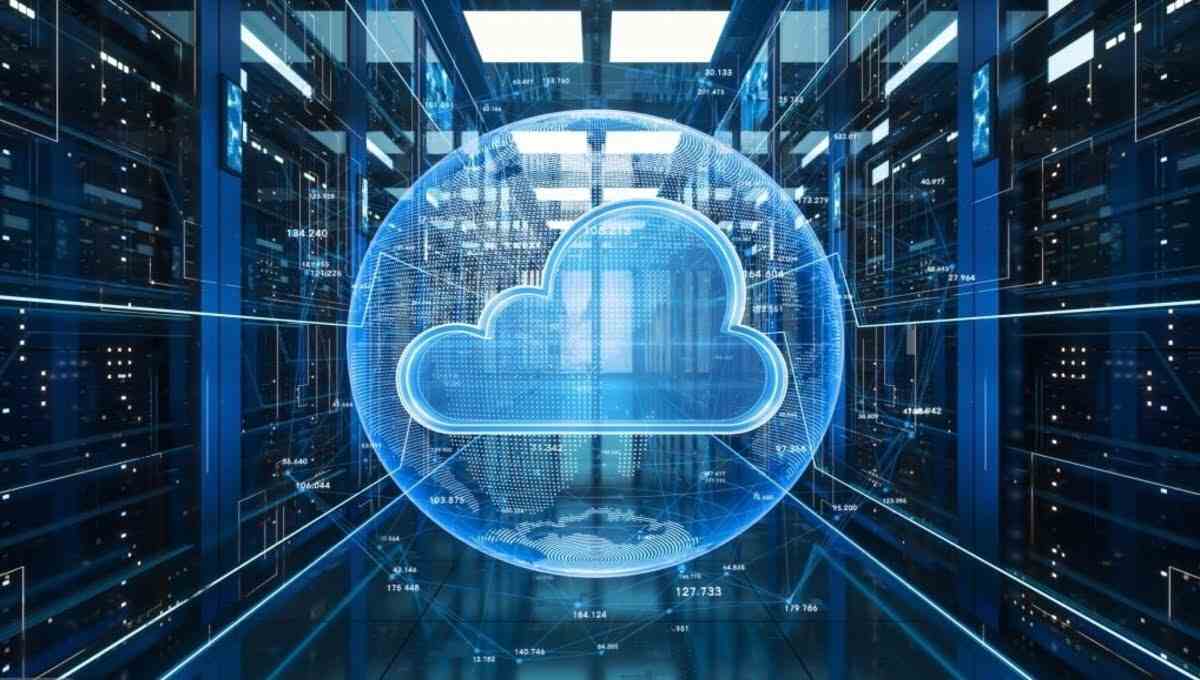CLOUD COMPUTING
Distributed computing in cloud computing?

Distributed cloud computing has significantly advanced computer network technologies over the past two decades. The introduction of the internet also led to significant developments in computing technology, and distributed cloud computing systems are one of the resulting cloud technologies.
Businesses can benefit from moving to the cloud, but it takes some consideration to determine which model is best for their organization. Distributed cloud computing is the next iteration of cloud computing, as evidenced by its many examples. This article will discuss different distributed cloud computing examples and delve more deeply into the concept.
What is distributed Cloud Computing?
Distributed cloud computing is a type of cloud computing that distributes resources across multiple locations. This can be done across different cloud providers, regions within a single cloud provider, or even other data centers within a single area.
There are several benefits to using distributed cloud computing. First, it can improve performance by reducing latency. When resources are closer to the users, data can be transferred more quickly. This is especially important for applications that require real-time processing, such as gaming or video streaming.
Second, distributed cloud computing can improve reliability. If one location experiences an outage, the application can continue to run in other areas. This is important for applications that are critical to business operations.
Third, distributed cloud computing can improve security. By allocating resources across multiple locations, it is more difficult for an attacker to compromise all the resources needed to run an application.
Why Do We Need Distributed Computing?
There are several reasons why we need distributed computing. One reason is that it can solve problems that are too large or complex for a single computer to handle. For example, distributed computing can process large amounts of data, such as those generated by social media or financial transactions.
Distributed computing can also be used to run applications that require a lot of computing power, such as video games or scientific simulations.
Another reason we need distributed computing is that it can be used to improve the performance of applications. By spreading the workload across multiple computers, distributed computing can reduce the time required to complete a task. This is especially important for applications that require real-time response, such as online gaming or stock trading.
Finally, distributed computing can be used to improve the reliability of applications. By replicating data and applications across multiple computers, distributed computing can protect against the failures of individual computers. This is important for applications that must be available 24/7, such as e-commerce websites or online banking services.
How does distributed Cloud Computing work?
Distributed cloud computing is a type of cloud computing that uses distributed computing to provide scalable and reliable services to users. In distributed cloud computing, the cloud provider typically owns and manages many computers spread across multiple data centers. These computers are then grouped into clusters, and each set is assigned a specific task.
For example, one set might be responsible for processing data, while another location might be responsible for running applications.
When a user requests a service from the cloud provider, the request is routed to the appropriate cluster. The cluster then divides the request into smaller tasks and assigns those tasks to the individual computers in the group. The computers then complete the tasks and return the results to the user.
Distributed computing comes in many flavors, each suited to different types of tasks and offering unique advantages and challenges.
Here are some of the most common types:
By Architecture:
- Client-Server: The classic model, where clients request data or services from a central server. Simple and scalable, but prone to server bottlenecks.
- Peer-to-Peer (P2P): Nodes act as both clients and servers, sharing resources and tasks directly. Highly resilient and scalable, but more complex to manage.
- Cluster computing: A group of closely linked computers working together for a common goal, often using high-speed networks. Ideal for parallelizable tasks.
- Grid Computing: Geographically dispersed computers collaborate on large, resource-intensive tasks. Efficient for utilizing idle resources but requires good coordination.
By Data Distribution:
- Shared Memory: All nodes have access to the same memory space, enabling fast communication but introducing synchronization challenges.
- Message Passing: Nodes communicate by sending messages to each other, offering flexibility but potentially slower communication.
- Distributed Shared Memory (DSM): Combines aspects of both, providing virtual shared memory across separate physical spaces. More complex but scales well.
By Application:
- High-Performance Computing (HPC): Focuses on solving complex scientific and engineering problems through massive parallel processing.
- Web Services: Distributed infrastructure supports highly available and scalable web applications.
- Big Data Analytics: Distributed systems manage, process, and analyze large datasets across multiple nodes.
- Content Delivery Networks (CDNs): Distributed content servers deliver media and website content efficiently to users worldwide.
This is just a glimpse into the diverse world of distributed computing. Choosing the right type depends on factors like the size and nature of your workload, performance requirements, budget, and desired level of complexity.
Advantages of Distributed Computing
Distributed computing offers several advantages over traditional computing models. Some of the critical benefits of distributed computing include:
- Scalability: Distributed computing can be scaled up or down to meet the application’s needs. This is because the workload can be distributed across multiple computers.
- Reliability: Distributed computing can be more reliable than traditional computing models because it can protect against the failures of individual computers.
- Performance: Distributed computing can improve applications’ performance by reducing the time it takes to complete a task.
Disadvantages of Distributed Computing
Distributed computing also has some disadvantages, including:
- Complexity: Distributed computing can be more complex than traditional computing models. This is because the cloud provider needs to manage many computers and ensure they all work together correctly.
- Security: Distributed computing can be more vulnerable to security attacks than traditional computing models. This is because the data is stored on multiple computers, which can be more difficult to protect from unauthorized access.
- Cost: Distributed computing can be more expensive than traditional computing models. This is because the cloud provider needs to purchase and maintain many computers.
What are some examples of distributed computing in cloud computing?
Some examples of distributed computing in cloud computing include:
- Media streaming: Netflix and YouTube use distributed computing to stream video content to their users.
- Web search: Google uses distributed computing to index the web and provide search results to users.
- Machine learning: Amazon Web Services (AWS) and Microsoft Azure offer distributed computing services for machine learning applications.
- Financial trading: Financial institutions use distributed computing to analyze market data and make trading decisions.
Conclusion
Distributed computing is a powerful technology that can solve various problems. It is beneficial for applications that require scalability, reliability, and performance. However, distributed computing can also be complex and expensive to manage. As a result, it is essential to carefully consider the application’s needs before deciding whether to use distributed computing.
Frequently Asked Questions (FAQs)
What is distributed computing?
Distributed computing is a model in which multiple computers work together to solve a common problem. This can be done by dividing the problem into smaller tasks that can be executed on each computer or by having each computer work on a different part of the problem. Distributed computing can be used to solve problems that are too large or complex to be solved by a single computer.
What are the future trends for distributed computing in the cloud?
The future trends for distributed computing in cloud computing include:
The rise of edge computing:
Edge computing is a distributed computing model in which computation is performed closer to the end user. This can improve performance and reduce latency for cloud computing applications.
The growth of artificial intelligence (AI) and machine learning
is becoming increasingly important for cloud computing applications. Distributed computing can be used to train and deploy AI and machine learning models.
The development of new cloud computing platforms:
New cloud computing platforms, such as Kubernetes and Docker, are being developed to make it easier to deploy and manage distributed computing applications in the cloud.What is an example of a distributed computing environment?
What kind of environment does a distributed computing system look like?
Systems connected to a network can share resources, including software, when the system is distributed. Examples of distributed computing applications or systems include email, WWW, the Internet, and intranets. Telephone networks and cellular networks are examples of telecommunication networks.Architectural model in distributed system
A distributed architecture is a model in which software components on networked computers interact with one another and plan their activities together to accomplish a shared objective. This method relies on multiple devices to do computation activities instead of a single central server.
What are distributed applications in cloud computing?
A collection of computer programs dispersed among several processing nodes is called a distributed application. Despite being independent hardware or software processes, all nodes cooperate to achieve the same goal. Another name for this configuration is dispersed computing systems.

 FUNDAMENTAL2 months ago
FUNDAMENTAL2 months agoHow Cloud Computing Improving Customer Service Processes

 FUNDAMENTAL7 months ago
FUNDAMENTAL7 months agoWhat is cloud computing? A Comprehensive Guide

 FUNDAMENTAL4 months ago
FUNDAMENTAL4 months agoHow can Cloud Technology Help Small Businesses ?

 FUNDAMENTAL7 months ago
FUNDAMENTAL7 months agoEvolution of Cloud Computing : A Well-Explained

 CLOUD COMPUTING2 months ago
CLOUD COMPUTING2 months agoWhat Is VlAN and VSAN In Cloud Computing?

 FUNDAMENTAL2 months ago
FUNDAMENTAL2 months agoIaaS PaaS and SaaS in cloud computing

 FUNDAMENTAL2 months ago
FUNDAMENTAL2 months agoWhich is a fundamental attribute of cloud computing?

 CLOUD COMPUTING2 months ago
CLOUD COMPUTING2 months agoHow to Make Your Own Cloud Storage : A Step-by-Step Guide










car rental in new guwahati
7 November 2023 at 22:39
Your weblog is often a testament to the strength of very well-crafted, significant content.
Kurt Betit
16 November 2023 at 20:31
I’ve advisable your blog site to my colleagues, and they love it too.
Savanna Wascher
20 November 2023 at 00:43
I recognize the way you broke down complicated principles into straightforward terms. It created it much easier to be familiar with.
Kelvin Tarvis
22 November 2023 at 02:59
Your put up was a terrific illustration of how to put in writing with empathy. You Plainly recognize your audience and their desires.
Zelma Deso
22 November 2023 at 05:52
Your website is The main reason I anticipate sitting down down and reading through. Preserve shining!
Rickie Berum
7 December 2023 at 02:57
Your written content often sparks intriguing conversations inside the reviews.
Gerard Tucay
10 December 2023 at 01:12
This website is my weekly dose of inspiration. Never cease sharing!
Jackie Riebel
24 December 2023 at 00:17
Thanks for delivering these useful articles. Maintain it up! https://www.reddit.com/r/redditreviewed/comments/18penwr/best_plumbers_in_austin_texas/